Dental Implant Procedure for Sequim, WA, and Port Angeles, WA Residents
Sequim Advanced Dental
specializes in helping individuals with their dentures and dental implants, but we are equipped and able to provide complete dentistry services. This includes but is not limited to cleanings, fillings, veneers, crowns, bridges, partials, dentures, bleaching and more!
Call
360-207-2133 today to schedule your appointment!
What Kinds Of Financing Are Available?
Patients often ask what financing options are available. In our office we offer several types of payment options from pre-payment discounts to five year financing. We also will gladly process your insurance claim for you.
PRE-PAYMENT DISCOUNT
If you pay your entire treatment plan in amounts over $10,000 before treatment actually begins you receive a 5-20% courtesy discount depending on the amount. If the amount is over $30,000 you will receive a 20% discount. You can pay this with a credit card, cash or a check.
90 DAYS SAME AS CASH
We have financing available through
Lending Club Patient FinancingSM
Our practice is pleased to offer flexible payment plans from Lending Club Patient Financing.
No initial payment and no payment for 3-7 weeks
Affordable Extended Plans with low fixed rates & low monthly payments
6 month Promotional Plans
No prepayment penalty
You can calculate potential monthly payment options. Or place an application
in a few short minutes, and decisions are typically available in seconds. For more information, just ask our team or visit lendingclub.com.
Also available is Carecredit.
CARECREDIT
which allows 90 days same as cash or they also have extended payment plans. Click here for their online application. Once you are approved, bring a copy of the approval with you to the office. Extended payment plans can be as low as 5.9%.
These applications can also be made in our office. Our office will be able to pull up your information as soon as it is approved.
Because we must pay a fee to these companies, there is no pre-payment discount available.
What Do I Need To Have To Get Dental Implants?
The two most important things necessary for success of a dental implant is good health and good bone. Many people are in excellent health and have good bone, for them implants are a great option and can easily and predictably be placed. For others with health problems or habits that affect their health we need to take a closer look. The following is a list of health conditions that must be addressed or that may affect the proper bonding of the implant to the bone:
SMOKING:
Smoking is the number one cause of dental implant failure. The nicotine causes a 50% reduction in oxygen to the bone. Implants require oxygen to bond to the bone. Nicotine patches and gums have the same effect as smoking on the bone and healing. While smokers can still have implants succeed, the success rate drops to about 75%. If a person stops smoking the tissues slowly recover.
ALCOHOLISM:
Alcohol also affects the body's ability to heal. Those that drink excessively are at much higher risk for infections and even cancer. For some reason home care goes down and this also affect the long term outlook for implants.
DIABETES:
Diabetes, in its uncontrolled state puts the patient at a much higher risk for infections. These can at times be life threatening. When the diabetes is properly controlled, the person is just like any other person in terms of their healing abilities and their resistance to infection.
OSTEOPOROSIS:
Osteoporosis can result in reduced bone mass and bone volume. It is made worse if the teeth are lost because there is no longer the necessary stimulation to encourage the bone to remain strong and the jaw bone can atrophy. Although osteoporosis can affect the success of the implants, usually if the implant is buried initially in the bone and undisturbed for six months the bone can bond to the implant and as the implant is used it can stimulate bone development and strength. Certain medications like Vitamin D, Calcium and Estrogen can help increase the bone mass.
HEART DISEASE:
Heart disease normally does not affect dental implants as long as normal oxygenation of the tissues is occurring.
HIGH BLOOD PRESSURE:
High blood pressure does not normal affect dental implants.
ARTHRITIS:
Arthritis normally does not affect implants, but some of the arthritis medications like methotrexate which is used in severe cases can cause implant failure. This usually only occurs when the implants are placed. If the implants are already in and bonded to the bone, there usually is no problem.
CHEMOTHERAPY:
Chemotherapy as used for the treatment of most cancers involves using a chemical which kills rapidly growing cells. While cancer cells are normally rapidly growing and therefore subject to attack, areas of new growth such as around recently placed implants can also be subject to attack. This can often cause the loss of the implant. We normally recommend that patients wait at least one year after chemotherapy before placing implants.
RADIATION THERAPY:
Radiation therapy also kill rapidly growing cells, but only if they are in the path of the x-ray beam. If a person is having radiation in a distant part of the body, there is usually no problem. If the radiation is in the area around the cells it can cause implant failure. If a patient has had radiation to the jaws the walls of the blood vessels thicken and the amount of oxygen that gets out to the cells is substantially reduced. Hyperbaric oxygen can be used to stimulate blood vessel growth and development and may allow a person to receive implants successfully. There is little research available on this so it should be undertaken knowing that there are risks to both the implant and the bone. The risk to benefit must be carefully studied in this area with a competent medical professional and prosthodontist working together. If a person does not have enough bone then a there are techniques which can be used to grow new bone.
A SINUS LIFT:
A sinus lift is a very effective way to increase bone mass for implants in the upper posterior region. This is the most predictable bone graft that we can do. There is usually minimal discomfort and most patients are back to work the next day. Sinus infections do occur on occasion and can cause the loss of the bone graft. This usually occurs only about 3% of the time. Click here to see our list of instructions for patients that will be having a sinus lift bone graft. Usually we wait about six months after the graft before placing the implants unless there is at least 5 mm of bone to stabilize the implant. If there is 5 mm of bone and the implant can be stabilized, the implant can be placed at the same time as the graft. We like to allow the implant to bond to the grafted bone for nine months before uncovering and restoring the implant. An only graft can be done if there is not enough width or height of bone. The donor site is often the chin or the posterior portion of the jaw although bone from the hip or shin can also be used. The bone graft is attached to the ridge with titanium screws. Often it is allowed to bond to the ridge for six to nine months before implant placement. This type of graft is less predictable and often must be done multiple times because the bone only grows from one side of the graft.
What Are Dental Implants?
Dental implants have been around in various forms for centuries. Only in the last thirty years, however, have they come to provide reliable replacements for natural teeth.
In the mid sixties a surgeon by the name of Branemark accidentally discovered that titanium cylinders placed gently into bone and then left undisturbed for three months could actually bond to the bone. While discussing this finding with some dentist friends they decided to see if titanium cylinders could be used as replacement teeth. Initial experiments were done in dogs. The implants were placed in the jaw of the dog using a very gentle technique and then allowed to rest in the jaw for three months. When the implants were exposed, a hook was attached and they were able to lift the dog completely off of the ground. Although, today, this seems cruel to us, it clearly demonstrated that the titanium cylinders could bond to bone and withstand substantial forces.
Since that time hundreds of thousands of dental implants have been placed in the mouths of people who were tired of floppy removable replacement teeth. Research has been conducted all over the world at numerous dental facilities. The success rates have been between 90 to 97% over the last thirty years.
Put simply a dental implant is a titanium cylinder with threads or a rough surface which is gently placed in the jaw of an individual. Titanium is a bioactive metal which, when undisturbed, is able to trick the body into believing that it is a tooth. The body therefore bonds directly to the implant surface with a bond that is even stronger than to natural teeth.
Crowns or attachments are placed on the implant and screwed into place with retaining screws which thread into the top of the implant.
If you are interested in dental implants and want to know about the potential problems with dental implants click here.
What Kind Of Dentist Does Dental Implants?
There are four different types of dentists that do dental implants.
A Prosthodontist is a dentist that is specially trained in the highly detailed area of placing teeth on top of dental implants. He has had at least two additional years of training and is highly skilled in dental implant restoration, crowns and bridges, dentures and other areas requiring a much higher level of skill to restore the mouth. Prosthodontists are often able to help a patient save teeth that often would otherwise be lost. Some Prosthodontists are also trained in the surgical preparation and placement of dental implants. These Surgical Prosthodontists can often provide most if not all of the services required by their patients.
Oral Surgeons are specially trained in surgical preparation and placement of dental implants. They often deal with the more complicated surgical requirements of dental implant patients. They do not provide replacement teeth to go on top of the implants. This work is referred to either a prosthodontist or a general dentist.
Periodontists are specially trained in the surgical preparation and placement of dental implants. They also deal with problems that may later arise if the implants are not kept clean. They also provide treatment to teeth that are suffering from gum diseases. They are often very effective in preventing the loss of the teeth in the first place.
General dentists are sometimes trained in various aspects of implant dentistry. Their level of expertise may vary from no dental implant training or experience to advanced training from a number of implant centers throughout the world. The general dentist provides for the regular dental needs of most patients. When the needs of the patient are more demanding, referrals are often made to a Prosthodontist, Oral Surgeon or a Periodontist. Their greatest concern is generally for the long term well being of their patients.
Dentistry has the following recognized specialties:
General dentists are trained to do most of the procedures in everyday dentistry. The specialists are utilized to provide a higher standard of care and to treat the more difficult patients. Any dentist, for instance, may extract a tooth or make a crown. An oral surgeon is often consulted for difficult extractions such as wisdom teeth and other maxillofacial surgical procedures while a prosthodontist might be consulted for a complete set of crowns or a major rehabilitation of the mouth.
1. The term Surgical Prosthodontist is a descriptive term and does not imply any other specialty training other than that of a prosthodontist.
Facts About "All On 4" And Immediate Loading Of Implants
There is a lot of advertising about getting your implant supported teeth in one day. The purpose of this discussion is to explain why implants succeed and why they fail and when one can begin using them immediately and when you must wait.
I have been placing and restoring dental implants since 1989. I completed my prosthodontic training at the VA Medical Center in San Francisco in 1990 and completed an advanced implant study club at Loma Linda Dental School in 1995. I did my first "Teeth in a Day" treatment in 2002.
THE BASIC CONCEPT
Dental implants bond to the bone only if they do not move. If for whatever reason, the implant moves, even a little bit, the body rejects the implant as a foreign body. The quality and quantity of bone are critical in determining whether the implant can remain immovable while you are chewing with them, at least in the beginning. Once the implant has bonded to the bone, a process called osseointegration, then the implant will not move even with fairly strong forces applied to it.
We use a CT scan to evaluate the quantity and quality of bone. Without this information you are literally shooting in the dark. If the bone is wide enough, and the bone is hard like oak hardwood, you can place the implants and build teeth on them immediately. If the bone is soft like balsa wood, trying to use the implants immediately will pull them right out of the bone. In the case of soft bone, the implant can still work if it is buried in the bone and left undisturbed for six to nine months for the bone to bond to the implant.
MECHANICAL PRINCIPALS
Dental implants also are subject to the laws of physics. If you put a lever arm on an implant it can cause it to move even if in normal circumstances it would not. Often, connecting the implants together, especially around an arch like you would if you built a set of upper or lower teeth can give reinforcement that counteracts these normal lever forces allowing the implants to function even before they have bonded to the bone. If however a tooth is built on the back of the implant in the molar region, this can create an extreme lever force, like that of a nut cracker, that will even compromise implants connected around an arch.
The other mechanical principal is that of bending of a beam. If you connect two implants together but have a distance between them, a force placed midpoint on the bridge can cause the structure connecting the implants together to bend if it is too thin in a vertical dimension. An easy way to picture this is a 2x4 piece of wood suspended between two posts. If the distance is small, you could walk on the 2x4 without bending it. If the distance is larger, your weight on the 2x4 would bend or even break the beam.
The Law of Beams calculates the amount of flexure in a bridge. Stated simply you take the number of teeth that are in between two implants and cube that number to determine the flexure of the bridge. If you have one false tooth then 1x1x1=1, if there are two false teeth then 2x2x2=8, three false teeth then 3x3x3=27. With three false teeth the bridge will flex 27 times more than with one false tooth.
If you are connecting 12 teeth on 4 implants there will be areas where you will have at least 27 to 64 times the amount of flexure. This can cause implant movement and failure or breakage of the bridge. For this reason we connect implants with never more than two false teeth between implants and preferably only one false tooth between implants.
ALL ON 4
There is a concept that is being promoted by some implant manufacturers in which they are attempting to build a whole set of upper or lower teeth on only four implants placed in the front portion of the mouth. From our previous discussion, it should be immediately obvious that if you have bone that is soft, like balsa wood, the probability of some of the implants failing at some point in time is high. If you also cantilever, or build teeth further back behind the implants you create the nutcracker type of lever and again may cause the implant to move or fail. Sometimes they counter this by using only a plastic bridge designed so that the bridge breaks instead of the implants. This can be frustrating if you keep having to go back for repairs.
There is a saying in the field of implant dentistry. "All on 4, none on 3." If you have committed your entire treatment plan to only four implants, and one fails your entire treatment fails. If you have placed the normal eight to ten implants and one fails the treatment plan usually still works. Yes it is more expensive, but what have you gained if you save money, but the treatment doesn't work?
One approach that addresses the softness of the bone in the upper arch is to use an implant that is embedded into the cheekbones. These are harder, but the implants have to be a lot longer and are often placed through the sinuses into the cheekbone.
IMMEDIATE IMPLANT PLACEMENT
Immediate implant placement is the process of extracting a tooth and placing an implant immediately into the socket. This works well if there is enough bone and the diameter of the socket is about the same as the implant. If the socket is a lot larger and you cannot engage enough good bone below the socket, then the implant will move and fail. This is especially true when trying to place implants immediately after extracting a multi-rooted tooth like a molar.
Usually the socket is larger than the implant, and sometimes there is enough bone beyond the tip of the root that can stabilized the implants. If there is enough bone to stabilize the implant it is placed into the socket simultaneously with a bone graft and then buried under the level of the bone.
IMMEDIATE RESTORATION OF AN IMPLANT
Often people want the tooth extracted, the implant placed and a crown put on the implant so that they do not have to go without a tooth. The same principles apply. If the implant can be placed so that it does not move and if there are no extra forces on the tooth, then the implant will work. The advantage of this approach is that the gums do not have a chance to collapse and the appearance can often be maintained. The disadvantage is that the gum sometimes still shrink a little after the extraction, even with the implant in place and the implant might show metal at the gum line. Usually we try and compensate for this by burying the implant deeper into the bone, but this can make maintaining the implant more difficult in the future. It is a fine line that we travel and we do not have as much control over the outcome as we might in a delayed placement situation.
If a baby is conceived you must wait 9 months before the baby is born. This is because it takes that long for the body to develop and the tissues to mature sufficiently. Would it be a good idea for the baby to be born at six months?
When we place an implant and the crown at the same time we usually place a night guard type of appliance to protect the crown from being touched during function. This is worn 24 hours a day/ 7 days a week. A temporary crown is placed initially and then a final crown is made six months later after all of the tissue changes have occurred and the bone has bonded to the implant.
This has been an overview of the most common questions regarding the placement and restoration of implants.
Mini Implants
As implants have become more and more available the efforts to decrease the amount of time required before the implants can be used has become more and more important. Many people do not want to pay for the dental implants only to learn that the standard titanium root replacement implants are supposed to remain buried and undisturbed in the bone. They believe that if they are going to pay that much money, that they should get the results immediately.
Because of this impatience, a new type of implant was developed. This implant was very small in diameter, only 1.8 mm versus the 3.3 to 6 mm diameter of the standard root replacement implant. This implant also was developed with a small ball on the top of it that could be incorporated as a snap for a denture or to secure a temporary bridge. These implants were place in between the standard implants at the initial implant surgery. The teeth were attached to the mini-implants, usually 4-6 of them, with a rigid or hard connection so that the patient could walk out with secure teeth. Since they were only going to be needed four to six months, it was ok to overload them because a long term integration of the implant to the bone was not desired. At the time to uncover the standard implants, it was found that about 50% of the mini implants had actually integrated or bonded to the bone. For those that were going to have a denture made over the top of the implants this meant more holding power than originally planned. For those progressing to bridges, the implants had to be removed.
Several of us began to wonder if we used a soft attachment to these mini-implants could we get them all to integrate or bond to the bone without resorting to the more expensive standard root form implants. In the few short years that this procedure has been used, the success rate has been high. The new technique requires no surgery and the implants are used immediately. Because of the higher potential failure rate, we are recommending four to six implants for each denture being supported. These implants only work with partial of complete dentures and the dentures must fit properly or the stresses on the poor fitting denture can cause implant loss. There is usually so little discomfort that when we went to Brazil in July of 2000 with the LDS Academy of Dentist, we actually placed mini-implants in three patients and they required no pain medications. There response the next day was that it was so nice to be able to eat without the denture moving around.
The mini-implants are a great service because they are so much less expensive. Since there is no surgery or sutures and the snap attachments are incorporated into the implant when it is manufactured, the savings are passed on to the patients. While there is a higher failure rate, usually associated with persistent discomfort, if the implants do require removal, the bone heals as though nothing had been there in the first place.
What are the Benefits of Mini-implants?
LOW COST
- usually $800 to 1000 each including the snap attachment.
IMMEDIATELY USEABLE
- you can walk out with teeth that are much more stable.
MINIMAL DISCOMFORT
- Most patients experience minor discomfort and rarely take more than tylenol or advil.
What Costs Are Associated With Dental Implants?
There are four general areas of care associated with dental implants. The fees listed are those currently used at Sequim Advanced Dental in Sequim, Washington.
The diagnostic phase is the first and most important phase of treatment. Implants that are placed without regard for the final restoration often require substantially more to restore. Sometimes, improper planning can result in an implant being useless. This phase requires a review of the patient's medical and dental history. Evaluation of the musculature of the neck and face as well as the bony support is required. Full mouth x-rays including a panoramic view of the jaw are essential.
A C.T. scan may be required to determine the location of vital nerves or to evaluate the quantity and quality of the available bone. Surgical templates may also be used, especially if the teeth are to be made by someone other than the implant surgeon. An examination and x-rays will cost about $150. A C.T. scan in our office will be provided at no charge. If you choose to take the scan and go to another doctor then there will be a $300 charge. A surgical template may cost between $100-200.
The surgical phase may require initial bone grafts if there is insufficient bone. In the past, many patients simply were unable to have implants placed because of insufficient bone. Now with advanced techniques implants are again a viable option. If grafts are required an additional period of four to twelve months may be required before placement of the implants. Once the implants are surgically placed in the bone, they must remain undisturbed for four to twelve months. The length of time depends upon the quality of bone available. The average patient usually takes Extra Strength Tylenol or Advil for the postoperative discomfort. With proper management the discomfort is usually minimal. Bone grafts may cost between $500-3,000. We also have the ability to separate your platelets, after a simple blood draw, and mix these growth hormone laden platelets with the bone graft materials to substantially improve healing and even eliminate scar formation. We can also draw stem cells from your hip using a gentle technique with minimal complications. This can substantially accelerate the healing process, especially if bone grafting is necessary. There is an additional fee of $800 for this process. The placement of the implants may range from $800-2000 per implant. The lowest cost implants are the new Mini-implants. Standard root form implants are $2000 each.
After the implants have been placed the person's dentures can be modified so that they can continue to be worn. If just some of the teeth are missing a temporary plastic partial may be worn. This solves the short term appearance problems that may exist. Once the implants have bonded to the bone the process of preparing the implants for use begins. Often an existing denture can be modified to fit over balls that are attached to the implants. These provide great stability and comfort for very little money. Crowns or bridges may be attached to the implants. The complexity of this part of the procedure magnifies with the number of implants. This may require more specialized treatment and higher costs. Temporary dentures or partials may cost between $750-2750. Modifying a denture to fit after surgery or over implants may range from $85-1000. Crowns on implants may range between $1200-2000 per tooth. Snaps usually cost about $1000 each.
The final phase is the maintenance stage of the process. Dental implants can last more than thirty years if properly maintained. This requires good cleaning skills to be learned by the patient. Maintenance visits are usually scheduled every three months. Once the patient has demonstrated a good track record the interval may be lengthened. If a denture is being supported by implants, the jaw bone may continue to dissolve in the areas away from the implants. This is a natural process and sometimes requires the dentures to be relined or remade. Maintenance visits usually cost $35. Cleanings range between $80-250 depending on the difficulty of the process. Replacement screws or attachments may range from $25-1000.
As with any type of service the fees may vary depending upon the complexity of the treatment or the skill level of the dentist. To improve communications, always discuss the total cost involved with treatment. Make sure that you know approximately what the costs will be. There are things that can make the treatment more expensive and may be beyond the control of the treating doctor.
ICAT
New, compact cone beam computed tomography system provides 3-D imaging at half the cost and less radiation.
Hatfield, PA, March 8, 2004
---- Imaging Sciences International introduced a new compact cone beam computed tomography(CBCT) system that provides unprecedented 3-D, digital imaging at half the cost of medical CT units and with less radiation to patients than traditional fan beam computed tomography systems. The i-CAT™™ provides high-definition, in-office three-dimensional, digital imaging in an easy-to-use unit that requires less than 60 square feet of floor space. The i-CAT''s™ volumetric imaging provides dentists and specialists complete views of all maxillofacial structures, allowing for more thorough diagnosis and planning, as well as more predicable treatment outcomes. Rather than referring patients to local hospitals or medical imaging centers, the i-CAT™™ economics and small footprint make it an excellent alternative for extending a dental practice's in-office continuum of care while offering the safest possible diagnostic techniques.
Las Vegas, NV, June 21, 2004
------Cheyenne Advanced Dental Arts introduces Nevada's first i-CAT unit. "Three-dimensional, volumetric imaging provides revolutionary information for implant planning, TMJ diagnosis and orthodontic treatment and care," says Edward Marandola, Imaging Sciences'' general manager. "The challenge has been to design and incorporate state-of-the-art digital imaging technology in a unit that makes economic sense, while delivering the quality of imaging demanded by today's practitioners." To overcome that challenge, i-CAT™ relies on an advanced amorphous silicon flat panel image sensor, instead of image intensifier technology employed by competitive units, to reduce the overall size of the unit and deliver a higher image quality and resolution.
"The i-CAT''s™ technology positions dental practices to offer a higher quality of care today in a unit which requires less space and is more affordable," says Alan Keim, sales director at Imaging Sciences. At the same time, the i-CAT™ provides a smart solution for practices entering or serving the growing patient demand for implants. i-CAT''s™ high resolution, volumetric images provide for three-dimensional analysis of bone structure and tooth orientation. The i-CAT™ is capable of producing precise cross-sectional slices of any desired location in the maxilla or mandible providing the exact dimensions and locations of critical anatomy, thus enabling the implantologist to select the most suitable implant type, size and location.
In fact, a new procedure, immediate load dental implants, allows the dentist to place a finished implant within a single visit rather than the many months that it now requires. These instant load procedures require CT images that, at one time, could have only been done on a traditional medical CT scanner. With the introduction of the i-CAT™™, Dr. Brooksby of Sequim Advanced Dental
now has a technologically superior, in-office, affordable unit that makes this treatment possible as well as facilitates the process.
For temporomandibular joint (TMJ) treatment and care, the i-CAT''s™ ability to provide three-dimensional images of the condyles and surrounding structure allow for complete analysis and diagnosis of bone morphology, joint space and function, keys to providing more predictable treatment outcomes. It also allow us to see the cervical spine which in many cases is the actual source of TMJ pain, says Dr. Scott Brooksby.
i-CAT''s™ rotational scan takes less than 20 seconds as the patient is seated in an open environment. i-CAT™™ software produces the primary reconstruction of the 3-D images in about two minutes, while secondary reconstruction of any desired view is in real-time.
"i-CAT™ allows dentists and medical providers like ENT's and Plastic Surgeons to extend their service offerings and enhance the overall delivery of care," says Dr. Brooksby. "The i-CAT''s™ technology and design puts Sequim Advanced Dental
at the center of patient care by providing a full continuum of services from diagnosis to treatment."
i-CAT™ effectively provides a complete, all-in-one solution for accurate diagnosis and the treatment of a range of anomalies, while streamlining the sharing of this digital information with insurance providers, other medical professionals and the patients themselves.
Dental Implant Complications
Dental implants generally have over a 90% success rate, however, there are things that can adversely affect this success rate.
The #1 cause of implant failure is SMOKING. Nicotine causes a reduction in oxygen flow to the bone. It does not matter if the nicotine is supplied by inhaling the smoke, chewing on tobacco, using a patch or chewing gum. The dental implants require oxygen to bond to the bone. When the bone is unable to bond to the implant due to lack of oxygen, discomfort usually results and the implants must be removed. Certain medications also affect the bone's ability to bond to the dental implant. Most drugs used for chemotherapy to treat cancer, kill growing bone cells resulting in the failure of the implant. Methotrexate, a drug for the treatment of arthritis also can cause dental implant failure. Adverse stresses on an implant can also cause the implant to fail. Dental implants are made of titanium which is a bioactive metal capable of tricking the body into believing that the implant is a tooth. Because of this the bone bonds to the implant as though it were the root of a tooth. When the implant moves after it is placed, the body recognizes it as a foreign object and rejects it.
In order for an implant to be successful, it is important that there be enough bone for the implant. If there is insufficient bone the implant might move. If the implant penetrates the bone into tissue there is a higher possibility of discomfort or failure. If there is a question as to the amount of bone available, a CT scan can determine if there is enough bone before the actual surgery takes place.
If the teeth have been missing for a long period of time, it is possible that the amount of blood flow to the bone may be at a reduced level. The placement of an implant may be more than the blood supply can handle. If this occurs the implant may fail. Often after the implant failure, the body grows new blood vessels in the area to heal the site and when an implant is placed again 3 to 6 months later, there is now sufficient blood volume for the implants to succeed. Occasionally, even when everything else has been done right, the demon Bad Luck steps in and causes the implant to fail. This doesn't happen very often, but can be very frustrating when it does happen. Even when Bad Luck rears its ugly head, implants can still be successful down the road.
Actual Titanium allergies are very rare, but could be a potential problem. This must be tested and verified by a certified allergist before making the assumption that problems are related to a titanium allergy because it is so uncommon that you would not want to miss the real culprit if titanium was present, but not actually causing the problem.
If you have any addition questions you may e-mail Dr. Brooksby at scott@drbrooksby.com
scott@drbrooksby.com. Please include the words implant or titanium in the subject line to avoid being mistakenly deleted as junk mail. If your would like a free consultation please call 360-207-2133.
You may also find more information at the following web pages.
Post-Surgical Care Instructions
We are able to provide all adult dentistry including cleanings, fillings, veneers, crowns, bridges, partials, dentures, bleaching, etc.
If you have any questions you may email us at
drscottbrooksby@gmail.com or call for a free consultation at
360-207-2133.





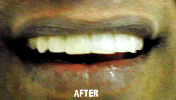
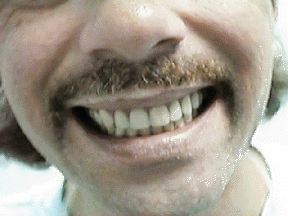
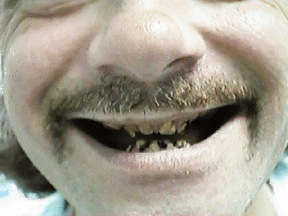
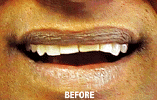
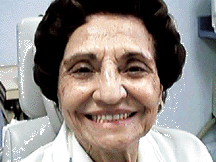
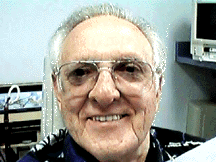
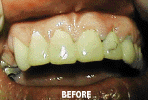
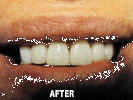










 680 W Washington St. Suite E102, Sequim, WA 98382
680 W Washington St. Suite E102, Sequim, WA 98382
